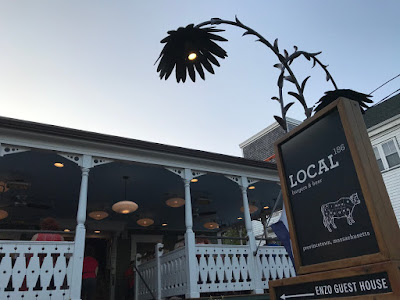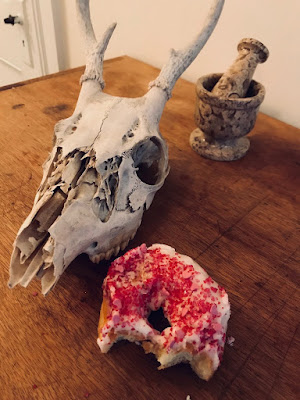I just started watching the new season of American Horror Story, and the first half of the show is set in Provincetown, Massachusetts. It's not the first time the show has invoked New England's weird history. The second season was also set in Massachusetts (at an asylum full of dark secrets), and the show has invoked the myths and legends surrounding the Salem witch trials a few times.
In the new season, a writer and his family move to Provincetown in the off-season so he can focus on his work. I'm sure nothing good will come of it, and it reminded me of a story I heard recently from a friend. Like the fictional writer, my friend moved to Provincetown in the off-season to do some writing. And like the writer, my friend also encountered something strange. There's one big difference though - my friend swears his story is true.
In the 1980s, my friend (whom I'll call James) moved to Provincetown to work on a book. To cover his expenses, he took a job as the front-desk clerk at an inn in town. He worked the nightshift. The inn (which is still in business today) had multiple buildings and many rooms.
On his first night on the job, the owner showed him where all the room keys were. They were all organized very neatly, but there was one key kept separate from all the rest.
 |
| Not the haunted inn, just a motel I liked the looks of... |
"That room," the owner said, "Don't let anyone stay there except as a last resort. It's not... a good room." The owner's stern expression discouraged James from asking any questions.
Fall turned into winter, and James didn't need to think about the unrentable room. Business was slow, and the inn never became full. But that changed one holiday weekend in February. The weather became unseasonable warm, and all the rooms filled up - except that one. It was the only room left.
James was at the desk at midnight when a car pulled up. The driver came in, and asked if a room was available. "There's no place else in P-town with a vacancy," he said. "I'll take any room you have."
James rented him the last room.
The next morning he told one of the housekeeping staff he had rented the last room. The housekeeper, an older local woman, looked at him in horror. "You're never supposed to rent that room!" she said.
"I know," James said. "But we were totally full. Can you tell me why we're not supposed to rent that room out?"
"Only if you help me clean it," she said. "I hate going there alone."
After the guest checked out, James and the housekeeper went to the unrentable room. James was disappointed when they opened the door. It looked just like any of the other rooms, with a large double bed and small bathroom. There was nothing strange at all. They set about stripping the sheets.
"Many years ago," the housekeeper said, "a young woman checked into this room by herself. No one thought much of it. She stayed one night, and then added another night. In the morning, she didn't check out. I came into this room to see if everything was OK."
"It wasn't. She had shot herself in the middle of the night. She had put a pillow over her head to mute the sound, and there was blood and brains and feathers everywhere. It was horrible. The worst thing I've ever seen."
The housekeeper explained that the young woman's ghost still haunted the room. People would hear her crying at night when the room was vacant, and the housekeepers heard her footsteps when they came in to clean.
James and the housekeeper finished making up the bed, left the room, and closed the door. "And that's why," the housekeeper said, "the owner doesn't like to rent the room. That's also why he put twin beds in there. It discourages people from taking the room. No one likes to sleep in small beds these days."
James was confused. "But there aren't twin beds in there," he said. "There's just one big bed. We changed the sheets on a double bed."
The housekeeper opened the door to the room. Inside were two twin beds.
*****
That's a great story, and it's perfect for Labor Day as the summer vacation season winds down and we move into fall. Thank you, "James" for sharing it with me!
I have a few updates. If you want to hear some interesting stories about witches (not ghosts), I'll be speaking Thursday, September 9 at 7:00 pm for the History Project about "Witches, Sex and Queer People: 1644 - 2021." The talk is free. You can register and find more details here.


































